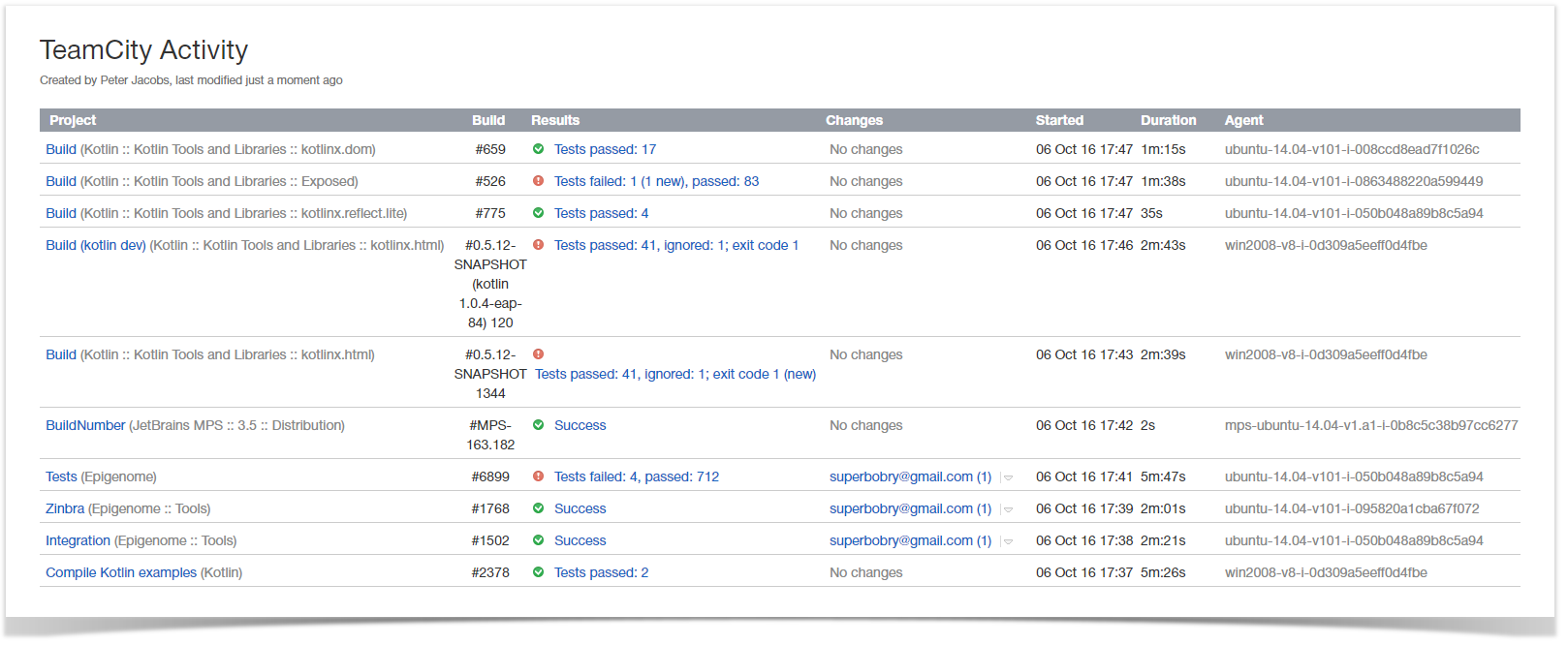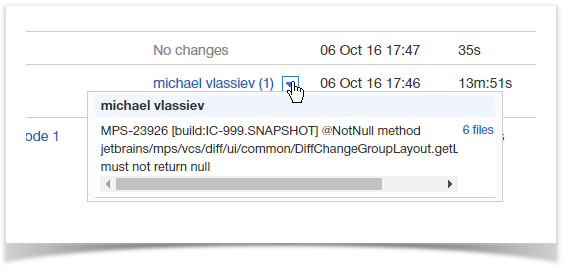TeamCity is the continuous integration server developed by JetBrains. By adding the TeamCity Activity macro to a Confluence page, you can display information about the recent TeamCity activity on your Confluence pages.
Before you can use this macro, your Confluence and TeamCity server should be connected via Application Links. People viewing the page will see information about the recent TeamCity activity fetched through the application link. Data are retrieved through TeamCity user account, so Confluence users needn't even have an account in TeamCity to view its activity. The add-on supports work with multiple TeamCity servers, so you can instantly view all activity in one place.
Adding the TeamCity Activity macro to a page
- In the Select Macro form, select the TeamCity Activity macro.
- Select the appropriate TeamCity server which activity data you want to view.
- Click Insert.
- Save the page.
Once you have saved the page, you will see the table with the following information:
- Project - project, which the build was completed for;
- Build - build number;
- Results - results of the build completion;
- Changes - the list of changes added into the build and the user who added these changes;
- Started - date and time when the build was started;
- Duration - duration of the build creation;
- Agent - agent, which performed the task.
You can click the entries in the Results column, to proceed to the build results in TeamCity instance.
If you want to view build changes, click the down arrow icon to expand the list of changes added into the build. You can view the files that were created, edited or deleted in the result of modifications, by clicking the N files link.
Code examples
The following examples are provided for advanced users who want to inspect or edit the underlying markup for a Confluence page.
Macro name: teamcity-activity
Macro body: None.
The following parameter is available in storage format.
| Parameter Name | Required | Default | Parameter description and accepted values |
|---|---|---|---|
server | no | By default, the primary application link is selected. If the primary application link is used, this parameter is not available in the storage format. | Name of the application link used for integration with TeamCity server. |
macro-id | Automatically assigned | ID of the macro on the page. | Confluence assigns ID of the macro automatically. |
Storage format example
Below you can find the example of storage format. The selected application link is not indicated anyhow in the storage format.
<ac:structured-macro ac:name="teamcity-activity" ac:schema-version="1" ac:macro-id="6b091831-fe3e-4243-b5f9-9aa649418f14"> <ac:parameter ac:name="server">TeamCity StiltSoft</ac:parameter> </ac:structured-macro>


